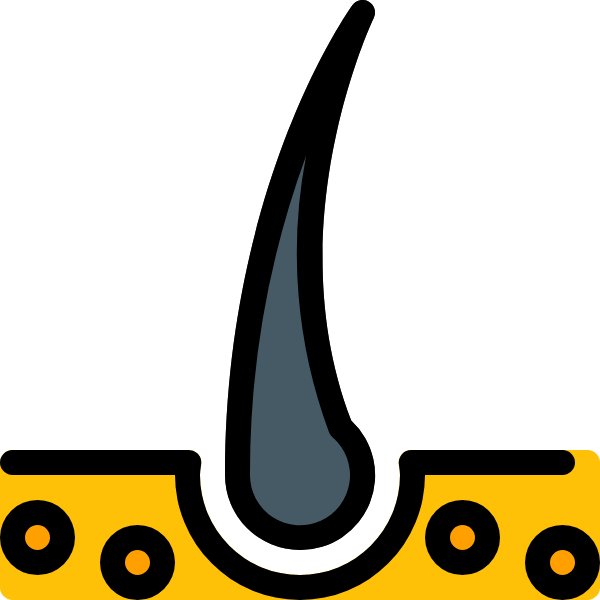A hair test can detect heavy metals like lead, mercury, cadmium, copper, iron, and arsenic in the body. However, hair levels are not currently considered a reliable marker of exposure or health, so the results should be interpreted cautiously.

Credit: www.holisticwellness.co.nz
Understanding Heavy Metals And Their Impact On Health
Understanding heavy metals and their impact on health is crucial for overall well-being. Heavy metals are toxic substances that can accumulate in the body over time. They can come from various sources such as environmental pollution, industrial activities, and even certain food and cosmetic products.
Common heavy metals found in the environment include lead, mercury, cadmium, and arsenic. Exposure to these metals can have serious health risks, including damage to the nervous system, liver, and kidneys, as well as an increased risk of cancer. It is important to be aware of these risks and take necessary precautions to minimize exposure to heavy metals.
Regular testing, such as a heavy metals hair test, can help identify any potential exposure and allow for appropriate intervention to protect our health.
The Benefits Of Heavy Metals Hair Test
A heavy metals hair test is a beneficial method for identifying heavy metal toxicity. This type of testing analyzes the hair to detect the presence of toxic metals in the body. One advantage of using hair as a testing method is that it provides a long-term view of metal exposure.
Hair testing allows for the comparison to other testing methods such as blood or urine, which may only show recent exposure. Additionally, hair testing is non-invasive and easy to collect, making it a convenient option for individuals seeking to assess their heavy metal levels.
By undergoing a heavy metals hair test, individuals can gain valuable insights into their overall health and take appropriate actions to reduce or eliminate heavy metal toxicity.
How To Prepare For A Heavy Metals Hair Test
Preparing for a Heavy Metals Hair Test requires following certain instructions and guidelines for accurate results. Before the test, it is important to adhere to dietary recommendations to minimize any potential interference with the test results. This involves avoiding certain foods and beverages that may contain heavy metals.
Additionally, it is crucial to take measures to minimize exposure to heavy metals in the environment. This includes avoiding contact with certain substances and practicing good hygiene. Factors such as recent hair treatments, medications, and the length of hair can also affect the accuracy of the test results.
By following these guidelines, individuals can ensure that they are adequately prepared for a Heavy Metals Hair Test and obtain accurate results.
Interpreting Heavy Metals Hair Test Results
Interpreting heavy metals hair test results is crucial for understanding the test report. The reference ranges for different heavy metals help identify abnormal levels. High or low levels of heavy metals have significant implications. It is essential to analyze the test results carefully to determine any potential health risks associated with heavy metal exposure.
The hair test provides valuable insights into heavy metal toxicity and allows for appropriate interventions to reduce exposure or detoxify the body. By understanding and interpreting the test report, individuals can take proactive steps to protect their health and well-being.
Regular monitoring of heavy metals through hair testing is recommended for those at risk of exposure or experiencing symptoms related to heavy metal toxicity.
Detoxification And Treatment Options For Heavy Metal Toxicity
Detoxification and treatment options for heavy metal toxicity are essential for maintaining overall health. Natural and medical detoxification methods play a crucial role in eliminating heavy metals from the body. Chelation therapy, a medical treatment, is effective in removing heavy metals from the system.
Additionally, making lifestyle changes is crucial in reducing exposure to heavy metals. This includes avoiding pollutants, using natural personal care products, and consuming organic foods. Nutritional support is also important for detoxification. Consuming foods rich in antioxidants, such as fruits and vegetables, can help eliminate heavy metals and support overall health.
It’s important to consult with a healthcare professional to determine the best treatment options for heavy metal toxicity.
Preventing Heavy Metal Exposure In Daily Life
Preventing heavy metal exposure in daily life is essential for maintaining good health. To reduce heavy metal exposure at home, follow these tips. Ensure safe practices for food preparation and storage, such as washing fruits and vegetables thoroughly. Choose organic and clean products to minimize exposure to pesticides and toxins.
Install a high-quality water filtration system to remove heavy metals from your drinking water. Additionally, avoid using products that contain lead or other heavy metals, especially in areas where children may come into contact with them. By implementing these practices, you can significantly reduce your risk of heavy metal exposure and protect yourself and your family’s health.
Frequently Asked Questions Of Heavy Metals Hair Test
Can A Hair Test Detect Heavy Metals?
Metals like lead, mercury, cadmium, copper, iron, and arsenic can be detected in hair. However, hair levels are not reliable indicators of exposure or health. Interpret hair test results with caution.
Can You Use Pubic Hair For Heavy Metal Testing?
Hair can be used to measure heavy metals like lead, mercury, cadmium, copper, iron, and arsenic, but it’s not a reliable indicator of exposure or health. Interpret results with caution.
How Long Do Heavy Metals Stay In Your Hair?
Heavy metals, such as lead, mercury, cadmium, copper, iron, and arsenic, can be detected in hair. However, hair levels are not considered a reliable indicator of exposure or health. Interpret hair monitoring results cautiously.
What Is A Hair Test For Heavy Metals And Minerals?
A hair test can detect heavy metals like lead, mercury, cadmium, copper, iron, and arsenic in the body. However, hair levels may not accurately reflect exposure or overall health, so results should be interpreted cautiously.
Conclusion
A hair test can detect the presence of certain heavy metals such as lead, mercury, cadmium, copper, iron, and arsenic. However, it’s important to note that hair levels of these metals are not a definitive marker of exposure or overall health.
Therefore, the results of a hair test should be interpreted with caution. Hair testing analysis is commonly used to assess heavy metal exposure, but it should not be the sole determining factor. Other diagnostic tools and medical evaluations should be taken into consideration for a comprehensive assessment.
If you suspect heavy metal toxicity or exposure, it’s recommended to consult with a healthcare professional who specializes in environmental medicine or toxicology. They can guide you in the appropriate testing methods and help develop a personalized treatment plan if necessary.
Remember, maintaining a healthy lifestyle, eating a balanced diet, and reducing exposure to potentially harmful substances can all contribute to overall well-being and minimize the risk of heavy metal toxicity.


